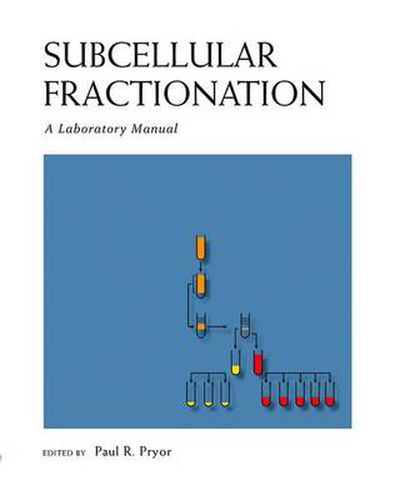Readings Newsletter
Become a Readings Member to make your shopping experience even easier.
Sign in or sign up for free!
You’re not far away from qualifying for FREE standard shipping within Australia
You’ve qualified for FREE standard shipping within Australia
The cart is loading…






Eukaryotic cells are remarkably complex structures, containing a vast repertoire of macromolecules, organelles, and other compartments that orchestrate the tasks required for life. For in-depth studies of their function and composition, reliable methods for the isolation of specific subcellular structures are often required. This laboratory manual provides step-by-step protocols for the extraction of subcellular components from animal tissues, yeasts, plants, and cultured cells. Each chapter focuses on a particular eukaryotic organelle, vesicle, membrane, or macromolecular complex. Strategies for breaking cells while maintaining the structural and functional integrity of the component of interest, enriching for that component based on its physical and biochemical characteristics, and monitoring and ensuring the success of the purification procedure are provided.
The contributors describe both traditional approaches (e.g., density gradient centrifugation) and innovative techniques (e.g., the use of SPIONs) for isolating subcellular constituents. This manual is therefore an essential laboratory resource for all cell biologists seeking a comprehensive collection of dependable subcellular fractionation methods.
$9.00 standard shipping within Australia
FREE standard shipping within Australia for orders over $100.00
Express & International shipping calculated at checkout
Eukaryotic cells are remarkably complex structures, containing a vast repertoire of macromolecules, organelles, and other compartments that orchestrate the tasks required for life. For in-depth studies of their function and composition, reliable methods for the isolation of specific subcellular structures are often required. This laboratory manual provides step-by-step protocols for the extraction of subcellular components from animal tissues, yeasts, plants, and cultured cells. Each chapter focuses on a particular eukaryotic organelle, vesicle, membrane, or macromolecular complex. Strategies for breaking cells while maintaining the structural and functional integrity of the component of interest, enriching for that component based on its physical and biochemical characteristics, and monitoring and ensuring the success of the purification procedure are provided.
The contributors describe both traditional approaches (e.g., density gradient centrifugation) and innovative techniques (e.g., the use of SPIONs) for isolating subcellular constituents. This manual is therefore an essential laboratory resource for all cell biologists seeking a comprehensive collection of dependable subcellular fractionation methods.